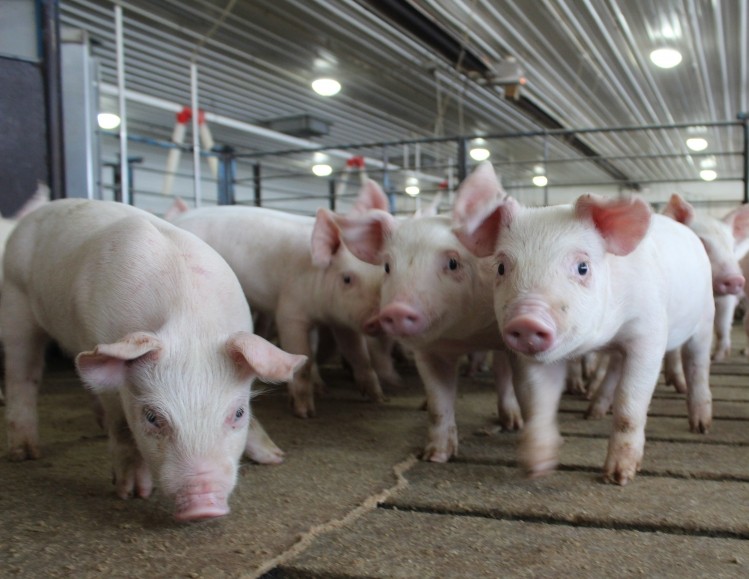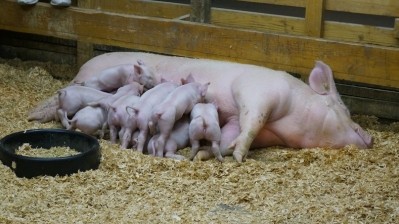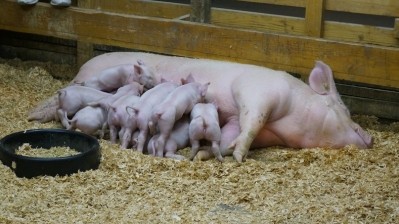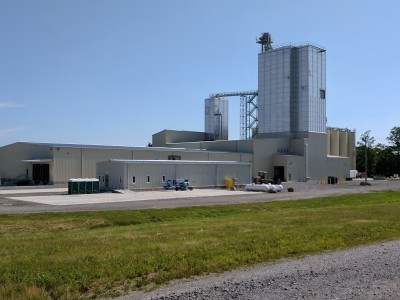Feeding for 30 Program celebrates two-year anniversary
Boosting quality of colostrum key to heavier sow litters, says Purina Animal Nutrition

Elena Lindemann, lactating livestock marketing director with Purina Animal Nutrition, told us the feed company is continuing to evaluate the impact of nutrition at every phase of swine production in a bid to bolster sow feeding practice in US swine farms.
And the company’s team of animal nutrition scientists, she said, has developed new technology aimed at boosting the production and quality of a sow’s colostrum in order to help farmers produce not only more pigs per sow, but heavier litters overall.
Lindemann said there have been key learnings for the US swine industry arising out of the first two years of the Feeding for 30 program, which is run by Purina, in partnership with the Zinpro Corporation and DSM Nutritional Products.
The program was set up to provide expertise and information using existing knowledge and research on the gilt, breeding, gestation and lactation phases of production to help swine producers achieve bigger sow litters.
“Nutrition is a cornerstone in US producers achieving 30 pigs per sow per year, and one of the key elements it plays a role in is maintaining body condition scores (BCS)," said Lindemann.
BCS is a key indicator of sow longevity and reproductive success. A sow that is too heavy or light will encounter complications in various stages of production, she said.
Milk production
The Feeding for 30 program, said the lactation expert, shows gestating sows should maintain a BCS of 3 on a 5 point scale as this allows them to produce more milk and enables a faster return to estrus after weaning.
“If sows are not fed properly in gestation and lactation to support litters, nutrients will be drawn from the sow’s body reserves and her body condition will be sacrificed,” said Lindemann.
Daily nutrient requirements by the sow are three times higher after farrowing in order to sustain daily milk production of 15 to 25 pounds per day to support the growing litter.
“Over-conditioned sows may lose extra weight quickly and under-conditioned sows can fall to an even lower BCS,” she said.
Lindemann said, in the past two years, there has been increase of around 2% in the number of swine producers in the US meeting the industry goal of 30 pigs per sow:
“When Swine Management Systems, in Nebraska, started their database a few years ago, there were no farms over 30 pigs per sow per year. New data shows industry growth.
Out of the 822 farms analyzed, representing 1.3 million sows in the US, 16 operations are now consistently over 30 pigs per sow per year with measurable growth in many of the operations.”
New DSM swine research initiatives
As partners in the Feeding for 30 program, DSM is providing expertise about the importance of vitamin supplementation for pigs, while Zinpro’s role is to disseminate information on the use of trace minerals to support optimal swine health and performance.
Jon Bergstrom technical support manager for swine, at DSM Nutritional Products, told FeedNavigator.com that the learnings from the program have influenced R&D developments at the company.
“The recent emphasis on obtaining and capitalizing on the greater reproductive performance of sows has stimulated new research initiatives by DSM and collaborating scientists.
For example, some new research is focusing on obtaining a greater understanding of the importance of the transfer of micronutrients from the sow to the progeny, while also identifying where there may be opportunities to improve the nutritional status of neonatal pigs,” he said.
The DSM swine nutrition expert said the quality of the vitamins supplied in swine feeds is extremely important.
“The vitamins must be provided in product forms that are highly bioavailable, with attention paid to the stability of each vitamin in the feed manufacturing and feeding environment.
The final vitamin product forms should also have good handling characteristics, so that their relatively small quantities are thoroughly distributed throughout the complete feed,” said Bergstrom.








